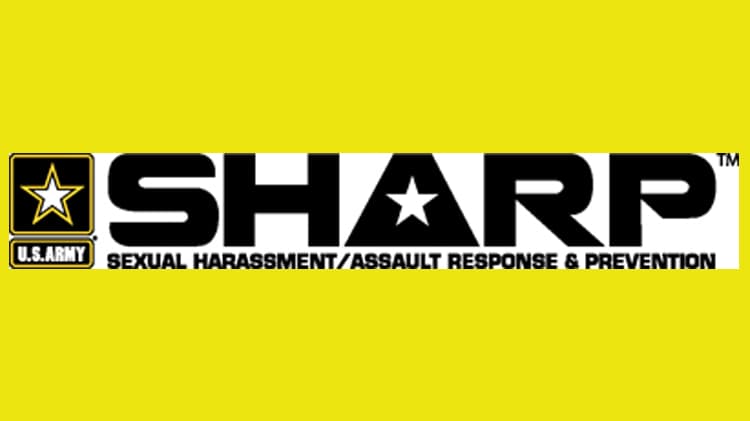The Sexual Harassment/Assault Response and Prevention (SHARP) Program is a comprehensive program designed to prevent and respond to incidents of sexual harassment and sexual assault in the military. It is implemented throughout the Department of Defense, including in the Army.
The SHARP Program has a number of different components, including prevention, training, response, and reporting. The prevention component focuses on education and training to prevent sexual harassment and assault from occurring in the first place. The training component provides all soldiers with the knowledge and skills they need to recognize and respond to incidents of sexual harassment and assault. The response component provides victim advocacy, medical care, and legal support to victims of sexual harassment and assault. Finally, the reporting component ensures that all incidents of sexual harassment and assault are reported and investigated and that appropriate actions are taken to hold offenders accountable.
The SHARP Program is critical to maintaining a safe and healthy work environment for soldiers in the Army, and it is taken very seriously at all levels of the organization. Soldiers who experience sexual harassment or assault are encouraged to report the incident so that they can receive the support they need and so that the offender can be held accountable.

How Does the SHARP Program Help Sexual Assault Victims?
- Confidential reporting: The victim can report the incident confidentially to a Sexual Assault Response Coordinator (SARC) or a Victim Advocate (VA) without starting an official investigation. This allows the victim to receive medical care and support without having to disclose their identity.
- Medical care and treatment: The victim will receive medical care and treatment to address any physical or mental health issues resulting from the assault.
- Victim advocacy: The victim will be assigned a Victim Advocate (VA) who will provide support, information, and resources throughout the investigation and legal proceedings.
- Legal support: The victim can receive legal support and representation through the Special Victims’ Counsel (SVC) program.
- Counseling and therapy: The victim can receive counseling and therapy through the Army’s Behavioral Health program to address any mental health issues resulting from the assault.
- Education and prevention: The Army provides education and prevention programs to increase awareness of sexual assault and harassment and to promote a culture of respect and dignity.
Overall, the SHARP program aims to provide comprehensive support and resources to sexual assault victims in the Army and to prevent such incidents from occurring in the future.

What are the Reasons for Sexual Assaults in the Army?
Sexual assault in the Army, like any other organization, is a complex issue with multiple contributing factors. Some of the reasons for sexual assaults in the Army include:
- The military is a hierarchical organization with strict chains of command, which can create power imbalances between members. This power dynamic can make it difficult for victims to report an assault by someone of a higher rank.
- Some military members may feel a sense of impunity due to a lack of accountability for their actions. This can be due to a lack of consequences for perpetrators of sexual assault or a belief that their actions will not be taken seriously.
- Attitudes and beliefs about gender roles, sexuality, and consent can contribute to a culture where sexual assault is normalized or excused.
- Military service can be a highly stressful and traumatic experience, which can increase the risk of sexual assault both for victims and perpetrators.
- Substance abuse can impair judgment and increase the likelihood of risky behavior, including sexual assault.
- Some military members may not receive adequate training on sexual assault prevention and response, which can contribute to a culture in which sexual assault is more likely to occur.
It’s important to note that sexual assault is never the victim’s fault and that it is the military’s and its members’ responsibility to prevent and address such incidents.

How to File a Sexual Harassment Complaint in the Army?
To file a sexual harassment complaint in the Army, soldiers should follow these steps:
- Report the harassment: Soldiers should report any sexual harassment they experience or witness to their chain of command, the Equal Opportunity (EO) representative, or the Sexual Harassment/Assault Response and Prevention (SHARP) program office. Soldiers can also report anonymously through the Department of Defense Safe Helpline.
- Gather evidence: Soldiers should document any incidents of sexual harassment they experience or witness, including dates, times, locations, and details of the incident. They should also gather any physical evidence or witnesses that can support their complaint.
- Consult with an attorney or advocate: Soldiers can consult with a military attorney or an advocate from the Army’s Victim Advocate program to learn more about their options and get support during the complaint process.
- File a formal complaint: If sexual harassment cannot be resolved informally, soldiers can file a formal complaint. This involves submitting a written complaint to their chain of command or the Equal Opportunity Office. The complaint should include details about the incident(s) of sexual harassment and any witnesses or evidence that can support the complaint.
- Participate in the investigation: Once a formal complaint is filed, an investigation will be conducted to determine the facts of the case. Soldiers should participate in the investigation and provide any additional information or evidence as requested.
- Follow up: Soldiers should follow up with their chain of command or the Equal Opportunity Office to ensure appropriate action is taken to address sexual harassment. If they are unsatisfied with the outcome, they can appeal the decision through a formal appeals process.
